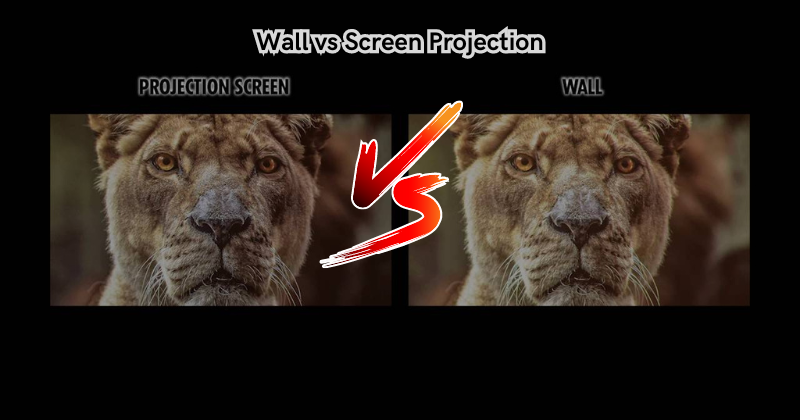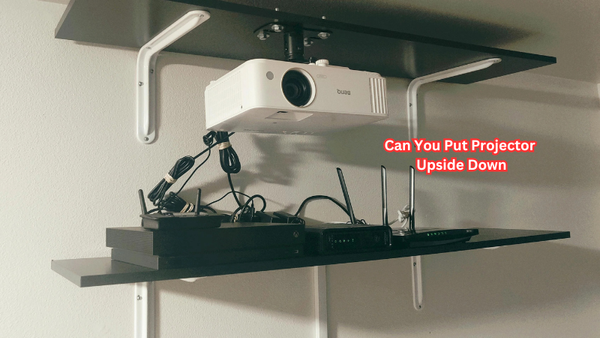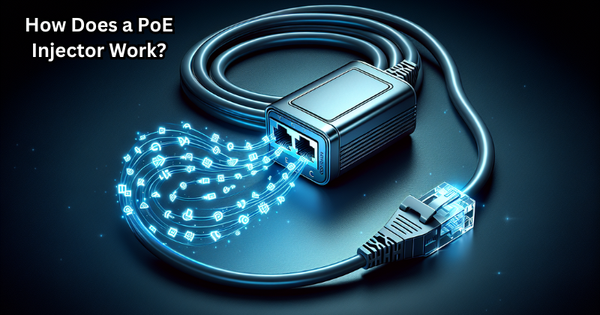Regarding displaying visuals in presentations or entertainment settings, two primary options stand out: wall projection and screen projection. Wall projection utilizes a blank wall surface as the canvas for displaying images or videos, leveraging the existing architecture.
On the other hand, screen projection involves using a dedicated screen designed to optimize image clarity and brightness. Each method has its distinct advantages and considerations. Wall projection offers versatility and seamless integration into the environment, while screen projection provides superior image quality and control.
Understanding the differences between these two options is crucial for selecting the most suitable solution for various applications and ensuring an impactful visual experience.
Understanding Projection of Screens and Walls
Wall projection works by using a projector to cast an image onto any flat surface, such as a smooth wall. This method can transform almost any blank surface into a display screen. It's a convenient option for settings where there is no dedicated screen available or when projecting onto large surfaces. However, the quality of the projected image may vary depending on factors like wall color, texture, and lighting.
Screen projection, on the other hand, involves using a dedicated screen made from specialized materials to enhance image quality. The screen's reflective surface is designed to optimize image brightness, contrast, and color accuracy while minimizing distortion and glare. Screen projection is preferred in settings where high-quality visuals are essential, such as movie theaters or conferences.
Projector Screen vs Wall Projection: What Are the Differences
Have you ever found yourself debating during movie night whether to project the movie onto the wall or use a screen? A dedicated screen versus a blank wall is a common dilemma faced by many.
Let's delve into the nuanced disparities between utilizing a projector on a wall versus a dedicated screen.
Material and Visual Performance:
Projector Screen:
A projector screen is designed with a special surface to optimize the performance of the projected image. The material used in screens differs depending on factors like gain (the amount of light reflected), color accuracy, and viewing angle. Screens can range from basic white matte surfaces to more advanced options like gray or silver screens for higher contrast and black levels.
Wall:
When projecting onto a wall, the material and color of the wall can significantly impact image quality. Glossy or reflective walls may cause glare, causing a washed-out image. Dark walls may absorb too much light, resulting in a dimmer picture.
Adaptability and Flexibility:
Projector Screen:
A projector screen is designed to be portable, lightweight, and easy to set up. This makes it an ideal option for events or presentations that require frequent setup and takedown. Additionally, screens can come in various sizes and aspect ratios, making them adaptable to different projection needs.
Wall:
Using a wall as a projection surface offers more flexibility in terms of size and shape. It can be used to create unique projection displays, such as projecting onto multiple walls to create a panoramic view. However, the location must have enough space for the desired projection size and may require additional setup time.
Cost Considerations:
Projector Screen:
The cost of a projector screen depends on factors like material quality, size, and features. Basic screens are generally more affordable, whereas high-end screens with advanced features like motorized mechanisms or 3D capabilities can be significantly more expensive.
Wall:
Using a wall for projection is the most cost-effective option since it eliminates the need to purchase a screen. However, additional costs may be incurred if the wall requires modifications or treatments to improve image quality.
Ambient Light Rejection (ALR) Capability:
Projector Screen:
Some screens come with ALR technology, which enhances image quality by rejecting ambient light and minimizing glare. This feature is particularly useful in settings with bright ambient lighting, such as outdoor events or brightly lit rooms.
Wall:
Since walls are not designed specifically for projection, they do not have built-in ALR capability. As a result, image quality may be impacted in environments with high ambient light levels.
Projector screen paint is designed to enhance image quality by providing a smooth, reflective surface for projection. Aspect ratio is also an important consideration when selecting a screen or wall for projection. So, it's essential to consider the compatibility of the aspect ratio between the projector and screen or wall for a seamless viewing experience. LED wall displays usually have better picture quality nowadays.
Overview of the Advantages of Projector Screen and Wall Projection
Projector Screen Advantages:
- Provides superior image quality
- Portable and easy to set up
- Offers ambient light rejection capability
- It can come in various sizes and aspect ratios
Wall Projection Advantages:
- Cost-effective solution for projection needs
- Allows for unique display configurations
- Seamlessly integrates into the environment
Screening on a bare wall or using a dedicated projector screen both have their benefits and considerations. Whether it's for personal entertainment, professional presentations, or commercial events, understanding the differences between these two options is crucial in enhancing the visual experience. However, using a projector without a screen will decrease the quality of the viewable image.
Limitations of Wall Projection and Screen Projection
Wall Projection Limitations:
- Image quality may be impacted by wall material, color, and lighting conditions
- Limited adaptability in terms of aspect ratio and screen size
- Requires additional setup time for optimal projection.
Screen Projection Limitations:
- Higher cost compared to utilizing a bare wall
- Less flexibility in creating unique projection displays.
- It may require additional storage space for the screen when not in use.
Tips When Using a Projector Screen or Wall Projection
Having Knowing the advantages and limitations of using a projector screen or wall projection, here are some tips for a successful projection experience:
- When using a projector screen, choose the appropriate material based on your projection needs and ambient lighting conditions.
- If projecting onto a wall, consider painting it with dedicated screen paint for better image quality.
- When setting up a screen, ensure it is correctly tensioned to avoid distortion or wrinkles in the projected image.
- For wall projection, make sure the wall is smooth and free of any imperfections that may impact image quality.
- When choosing a screen or wall for projection, consider factors like aspect ratio, size, and adaptability to meet your specific needs.
A white wall or dedicated screen, the ultimate decision ultimately depends on your personal preferences and usage. Projector screens offer optimized image quality, adaptability, and flexibility at a cost. Wall texture and color can make or break an image's quality, but it offers unique display configurations at minimum cost. But portable screens can allow you to project anywhere, making it a popular option for events and presentations.
Which One Delivers the Perfect Viewing Experience?
While both wall projection and screen projection have their advantages, the answer ultimately depends on personal preference and specific needs. In a home setting, projecting onto a blank wall may be more convenient and cost-effective. However, in professional settings or events that require high-quality visuals, a projector screen is the optimal choice.
Regardless of which option you choose, investing in quality equipment and optimizing the projection environment will ensure a superior viewing experience. Consider factors like material, size, lighting conditions, and aspect ratio to determine which option best suits your needs. So next time you're faced with the projector screen versus wall decision, consider these differences to make an informed choice for the perfect visual experience.
Types of Screens for Projection
Now that we understand the differences between using a screen or wall for projection let's explore the different types of projector screens available:
- Fixed Frame Screens:
- Motorized/Electric Screens:
- Manual Screens:
- Portable/Foldable Screens:
- Ambient Light Rejecting (ALR) Screens:
- Rear Projection Screens:
- Tab-Tensioned Screens:
- Inflatable Projection Screens:
Each type of screen offers unique features and benefits, making it essential to research and understand which one best suits your projection needs.
FAQs
Is projector paint as good as a screen?
Projector screens are specifically designed for projection and offer better image quality, adaptability, and features compared to projector paint. However, projector paint can be a cost-effective solution if used correctly.
Can a white wall be used as a projector screen?
Yes, it is possible to use a white wall for projection. Typical wall paint may not provide optimal image quality, but dedicated projector screen paint is available to improve projection performance on walls.
Can an LED wall be used for projection?
Yes, LED walls can be used for projection. They offer high-quality images and are ideal for large displays or events. However, they may not be as cost-effective compared to traditional projector screens or walls. Painted wall projections are budget-friendly options for creating a larger projected image.
What is a projection light?
The projector's light source, which is typically a halogen lamp or LED bulb, produces the light that is directed towards the projection surface. This light then passes through an LCD panel or DLP chip to create the projected image. The brightness and color accuracy of the projector's light source play a crucial role in determining overall image quality.
Conclusion
In conclusion, choosing between wall projection and screen projection hinges on carefully considering specific needs and desired outcomes. Wall projection offers a budget-friendly, versatile option that seamlessly integrates visuals within a space, making it ideal for temporary setups or large-format displays.
On the other hand, screen projection provides a dedicated surface designed to optimize image quality, delivering superior brightness, contrast, and clarity essential for professional presentations or permanent installations.
Ultimately, the decision should be guided by the intended usage, environmental factors, and the desired visual impact. By understanding each approach's distinct advantages and limitations, individuals and organizations can make informed decisions that align with their communication objectives.
Whether aiming for flexibility, cost-effectiveness, or premium visual fidelity, the choice between wall and screen projection significantly influences the overall effectiveness of visual content delivery.





